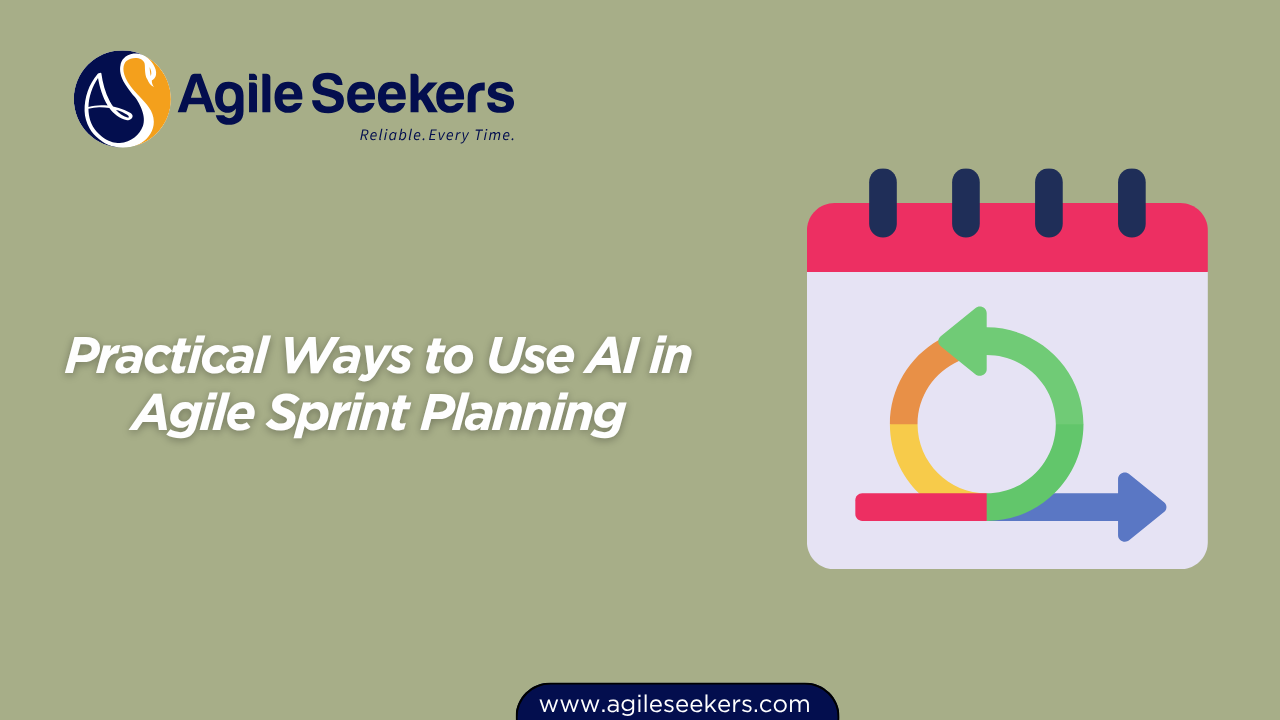Practical Ways to Use AI in Agile Sprint Planning

Sprint Planning is where real execution starts in Agile. But let’s be honest—this phase often gets bogged down in repetitive estimation, endless prioritization debates, and chasing incomplete data. That's where AI steps in—not to replace humans, but to reduce friction and sharpen decision-making.
Let’s break down how you can actually use AI during Sprint Planning in practical, actionable ways—no theory, just what matters.
1. Use AI to Refine User Stories Automatically
Writing user stories manually for every task takes time, and it’s often inconsistent. AI tools like Jira’s Smart Compose or GitHub Copilot for issues can analyze historical data and generate consistent, structured user stories based on a few inputs.
How to use it:
-
Input raw requirements into the AI tool
-
Get AI-generated user stories following the "As a... I want... So that..." format
-
Quickly tweak based on your domain or persona
This eliminates writing fatigue and speeds up backlog grooming.
📌 Want to go deeper? Learn how this works inside AI for Scrum Masters Training at AgileSeekers.
2. Estimate Effort Using Historical Sprint Data
Traditional estimation is filled with guesswork. But AI can look at your team’s actual past sprint data to suggest story points or hour-based estimates with far greater accuracy.
Tools like PlanITpoker, Forecast, or Azure DevOps AI plugins can:
-
Analyze completed tickets
-
Match similar backlog items
-
Recommend realistic effort values
No more endless debates over whether a task is a “5” or an “8”.
🔗 External reference: How Microsoft uses AI in Azure DevOps
3. Prioritize Backlog Based on Business Value and Risk
AI can help product owners sort through a massive list of features and bugs by factoring in:
-
Customer feedback
-
Usage patterns (from tools like Pendo or Mixpanel)
-
Risk scores (e.g., based on technical debt or error frequency)
This ensures your sprint backlog reflects what actually delivers value—not just what’s loudest in meetings.
📌 Tip: Combine AI-powered prioritization with Weighted Shortest Job First (WSJF) scoring to fine-tune what makes it into the sprint.
4. Generate Sprint Goals Based on Context
Crafting a good sprint goal is tricky. AI can help by analyzing:
-
The focus of the selected backlog items
-
Dependencies and blocked work
-
Historical sprint themes
The result? Drafted sprint goal options that you can adjust instead of starting from scratch.
For example, if your sprint includes mainly bug fixes around payment flow, the AI might suggest:
“Improve the stability of the checkout experience by resolving key defects identified in user testing.”
Not bad for a starting point.
5. Detect Overcommitment and Capacity Risks Early
AI doesn't just help plan sprints—it helps you not overcommit. Based on team velocity, planned leaves, and individual workloads, AI tools can flag if your sprint is overloaded.
Platforms like ClickUp, Monday.com, or Jira Advanced Roadmaps use AI to:
-
Project whether tasks will spill over
-
Recommend workload balancing
-
Warn about bottlenecks before they hit
This saves Scrum Masters from post-sprint excuses and helps manage realistic commitments.
6. Use AI to Simulate Sprint Scenarios
Want to know what might happen if you drop a story or change scope mid-sprint?
AI-based simulators can show you different sprint outcomes before you commit:
-
Completion probability based on past behavior
-
Impact of shifting one key dependency
-
Risk of spillover if a blocker isn’t resolved in time
🔗 External resource: Forecast App – AI-based sprint simulation
This lets Scrum teams make smart tradeoffs in Sprint Planning without shooting in the dark.
7. Spot Incomplete Requirements Using NLP
Natural Language Processing (NLP) models can scan your backlog items and highlight:
-
Missing acceptance criteria
-
Vague descriptions
-
Inconsistent terminology
This ensures that what’s brought into the sprint is testable, clear, and ready to be worked on.
You can integrate tools like Grammarly for Jira, or custom LLM-based plugins, to review tickets during planning sessions.
8. AI-Powered Retrospective Inputs Before Planning
Planning without learning is just guessing again.
Before Sprint Planning, AI can analyze:
-
Previous sprint burndown charts
-
Blocker trends
-
Cycle times
This helps the team not just plan, but adapt. AI can surface insights like:
“Stories related to API integration have 60% longer cycle time. Consider splitting or refining.”
Use this input live in Sprint Planning to course correct before starting.
9. Automate the Sprint Planning Meeting Agenda
AI tools like Notion AI, Fireflies, or Otter.ai can prep meeting agendas for Sprint Planning based on:
-
Open backlog items
-
Velocity trends
-
Carryovers from previous sprints
-
Available team capacity
This saves Scrum Masters from spending hours setting the stage and allows the team to jump into discussions faster.
10. Generate Burndown Forecasts on the Fly
Once your Sprint is planned, AI can start modeling your ideal burndown path based on selected stories and past sprint behavior.
Many AI plugins in Jira and Asana now offer:
-
Predictive burndown charts
-
“What-if” simulations if scope changes
-
Sprint health dashboards from Day 1
No need to wait till mid-sprint to realize things are going off track.
Final Thoughts
The point of AI in Agile Sprint Planning isn't to automate everything. It’s to free the team from repetitive grunt work so they can think, collaborate, and deliver better.
When used correctly, AI helps teams:
-
Plan faster
-
Make data-backed decisions
-
Reduce meeting fatigue
-
Catch risks earlier
-
Align with business value consistently
For Scrum Masters and Agile Coaches looking to embed these practices into their workflow, check out the AI for Scrum Masters Training. It covers practical tools, real use cases, and frameworks to confidently bring AI into your Agile rituals.
Also read - How AI is Transforming the Daily Standup for Scrum Masters




















